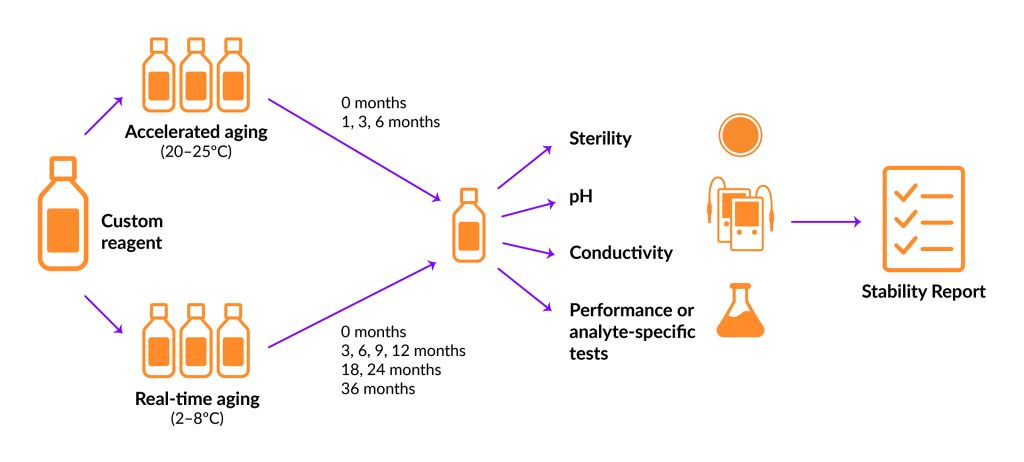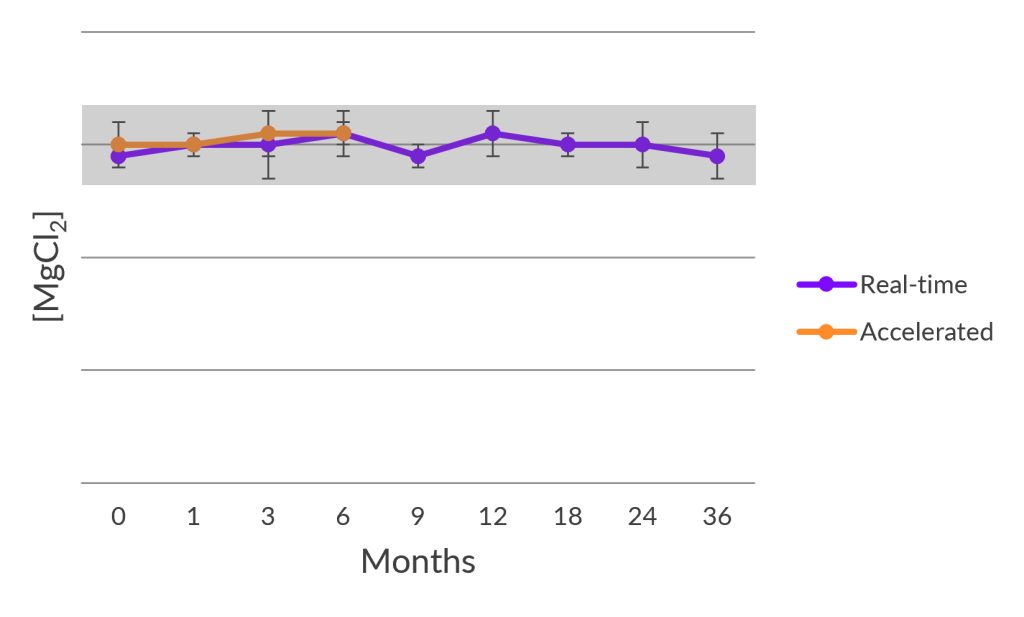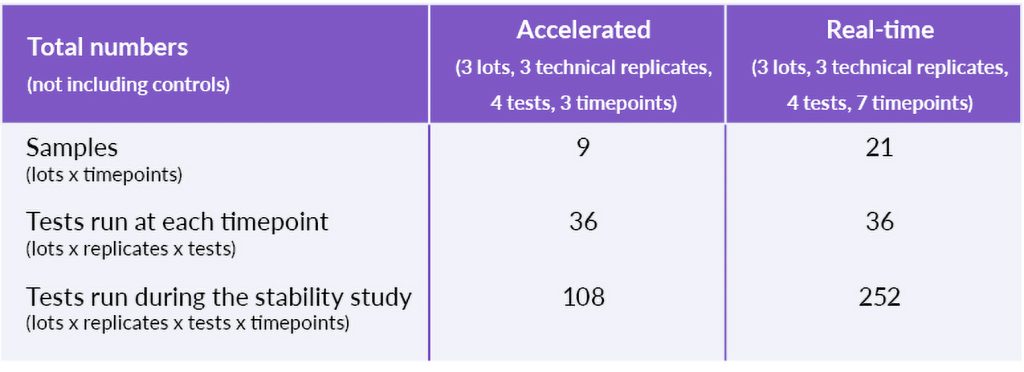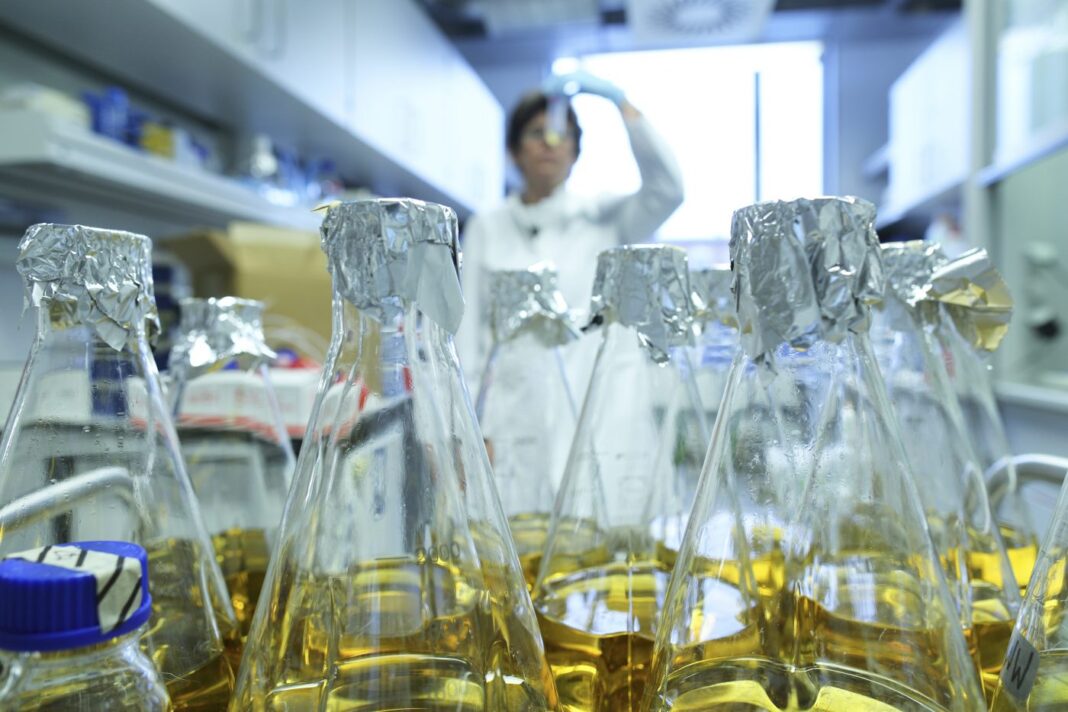Stability testing is essential in the pharmaceutical and biopharmaceutical industries. These tests are performed to evaluate the stability of drug products under various environmental conditions. Once storage conditions have been defined, data from carefully designed stability studies are used to establish shelf life and to help determine retest dates for drug products. Although emphasis has historically been placed on the stability of final products, the stability of reagents used in the manufacturing process is also an important consideration.

Director of R&D, Teknova
The need for custom-made GMP reagents used in the development, scale-up, and manufacture of novel therapeutics is increasing rapidly. The shelf lives for these new GMP formulations are not known, so stringent stability studies need to be designed and conducted to ensure that safe and effective reagents are employed throughout the manufacturing process. Because chemical degradation can occur over time, leading to lower concentrations of critical components or the accumulation of toxic substances, it is important to define the shelf lives of these critical intermediate reagents under specified conditions.
Stability testing fundamentals
There are two main types of stability tests: accelerated and real-time (Figure 1). Accelerated testing is performed under increased stress by changing factors such as light, heat, and/or humidity. These conditions are used to exacerbate the aging process to simulate long-term storage. The resulting data provide an early view of what might be expected from real-time stability studies, which are running concurrently.
However, extrapolating accelerated study results to “normal” storage conditions can be misleading and should be interpreted with caution (Ebrahim et al. Clin. Chem. 2021; 67: 684–688). Real-time stability testing follows the dictated storage conditions of the final product to allow the assessment of changes over extended periods of time. A typical study incorporates testing at 3, 6, 9, and 12 months during the first year. Subsequent testing occurs twice a year in the second year and once a year thereafter for a predetermined time.

What tests are needed to establish stability?
Custom GMP reagents require custom stability test plans. Deciding which tests are necessary will depend on the type of product and the product’s components and intended use. Key specifications that are included in the Certificate of Analysis also can inform the choice of tests.
Commonly selected metrics include pH, conductivity, density, osmolality, and appearance. The types of assays or measurements for concentration, performance, and activity will be tailored for specific components or applications.
Understanding the scope of stability studies
Depending on the sample volume, the number of stability tests, and the duration of the stability study, the resources required can become consequential. Stability tests are typically done on samples that are in the final packaging format. For example, sample volumes and container types typically match those of the final product.
The testing plan and timepoints need to be determined and factored into the manufacturing process since the volume of reagent in the lots must account for the amount needed to complete the stability study. Given the number of lots, controls, technical replicates, and tests that are run at each time point, the number of individual tests can increase quickly.
The planned study duration also means that long-term storage facilities must be available to store study samples under controlled environmental conditions. In addition, instruments for stability testing must be purchased and maintained, and staff must be trained to perform tests following standardized protocols.
Outsourcing for efficiency
At critical points in development, many companies choose to outsource the production of their custom GMP formulations to optimize their resources and free up time. Similarly, the investment in facilities, equipment, and staffing often influences whether stability studies are conducted in-house or outsourced to a manufacturer or service provider. Outsourcing stability studies of custom reagents allows inhouse facilities and staff to remain available for key manufacturing processes. In addition to having trained scientists to perform the selected studies, the testing provider can offer expertise in study design and regulatory requirements.
There are additional advantages of having the custom reagent manufacturer conduct the stability studies. The release criteria for each lot can be used as a true time-zero data point, meaning this data was obtained using standardized protocols and the same instruments that will be used throughout the studies. If needed, manufacturers also have ready access to retention samples to assist in troubleshooting to help determine if there could be product or process issues.
Example: Custom buffer that improves yields in gene therapy manufacturing
To further illustrate the design and scope of a good stability study, we have created an example that mimics a real-world project that could be performed by a custom reagent manufacturer. In this scenario, a gene therapy manufacturing company requests a custom buffer containing an optimized, critical component: magnesium chloride (MgCl2 ). The manufacturer needs to ensure that the amount of MgCl2 in the buffer remains at a specific concentration over the life of the product because any changes can decrease the efficiency of viral production.
Once we produce the buffer, our scientists perform experiments that confirm the concentration of the critical component (for example, by analytical titration and atomic absorption spectroscopy). This methodology is used to monitor MgCl2 concentrations during the stability studies. Moreover, these particular buffer samples are also tested for sterility, pH, and conductivity.
To summarize:
- Sterility testing (based on USP <71>) is typically included for reassurance since sterility of the unopened product should remain unchanged. Because this is primarily an assessment of the container closure system, some study plans include sterility testing once a year, instead of at every time point.
- The pH (based on USP <791>) and the conductivity (based on USP <645>) are used as standard, general measures of stability in biopharma settings. Changes could indicate degradation of components in the buffer.
- The MgCl2 concentration is monitored by following the USP monograph for magnesium chloride, which dictates testing methodology (Figure 2).

In keeping with a comprehensive stability study design, we include samples from multiple lots of buffer in accelerated and real-time testing. The accelerated study is shorter, and buffer samples from three lots are stored at a higher temperature (in this case, timepoints at 1, 3, and 6 months with samples stored at 25°C). In contrast, the real-time study is longer in duration, and samples from the same three lots are stored at recommended conditions (in this case, timepoints at 3, 6, 9, 12, 18, 24, and 36 months with samples stored at 4°C). Note that each sample is used to produce three technical replicates for each test. See Table 1 for an overview of the sample and test numbers in this study.

The accelerated stability study supports the use of the new custom buffer during early research and development until the real-time data is available. The gene therapy manufacturer can determine the shelf life of the buffer under the specified storage conditions based on data from the real-time study.
Key takeaways about stability testing
The optimal design (which includes the selection of tests and timepoints) of a stability study depends heavily on the composition of the custom reagent and its intended use. Stability testing provides supporting evidence that helps ensure GMP products meet both internal and external requirements, and that contributes to the production of safe, pure, and effective consumer products. In the long term, investing in stability testing of custom reagents helps to remove a potential variable in the complex workflow for development and manufacturing of novel biotherapeutics. With growing access to stability testing through reagent manufacturers and other third-party partners, the demand for stability testing will be on the rise.
Bella Neufeld, PhD, is director of research and development at Teknova and leads its stability studies program. Website: www.teknova.com

